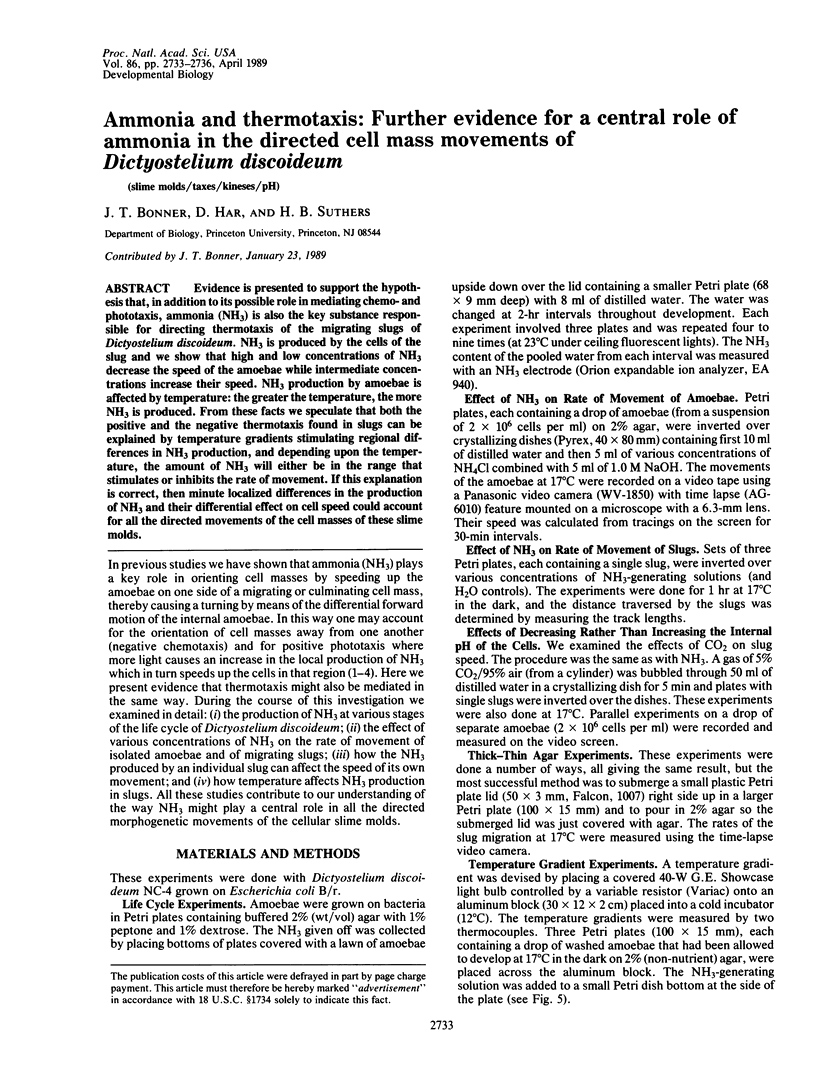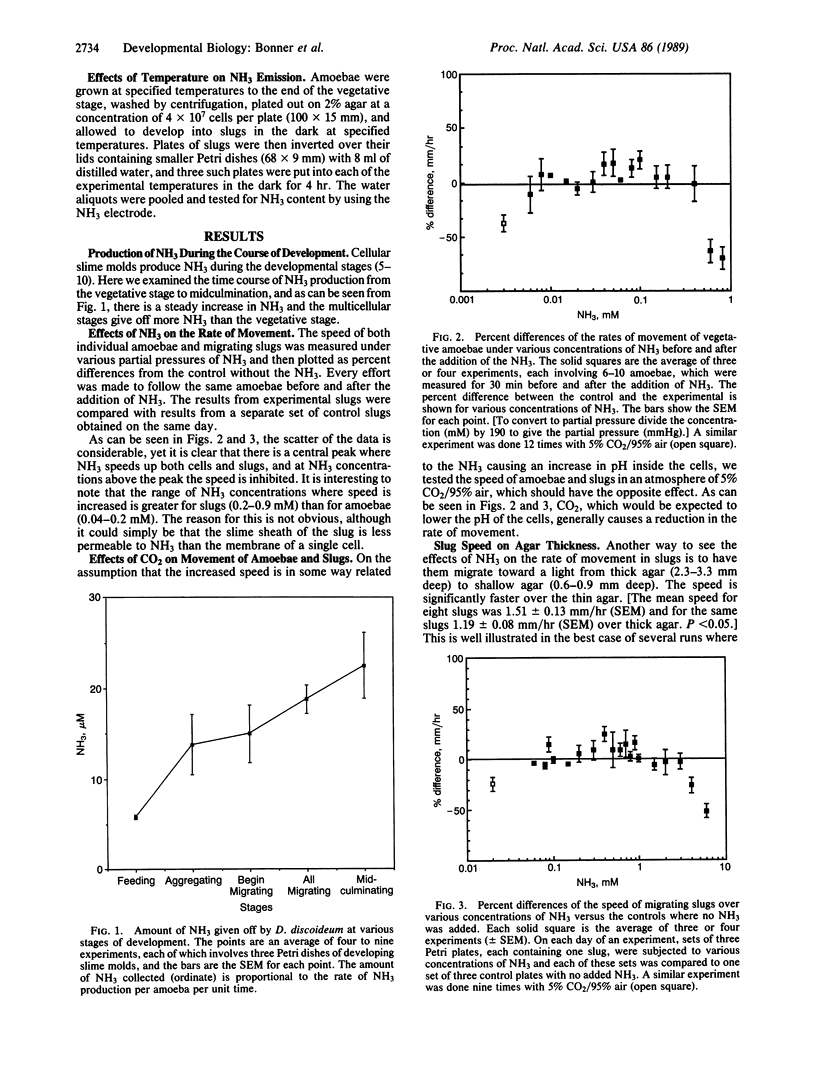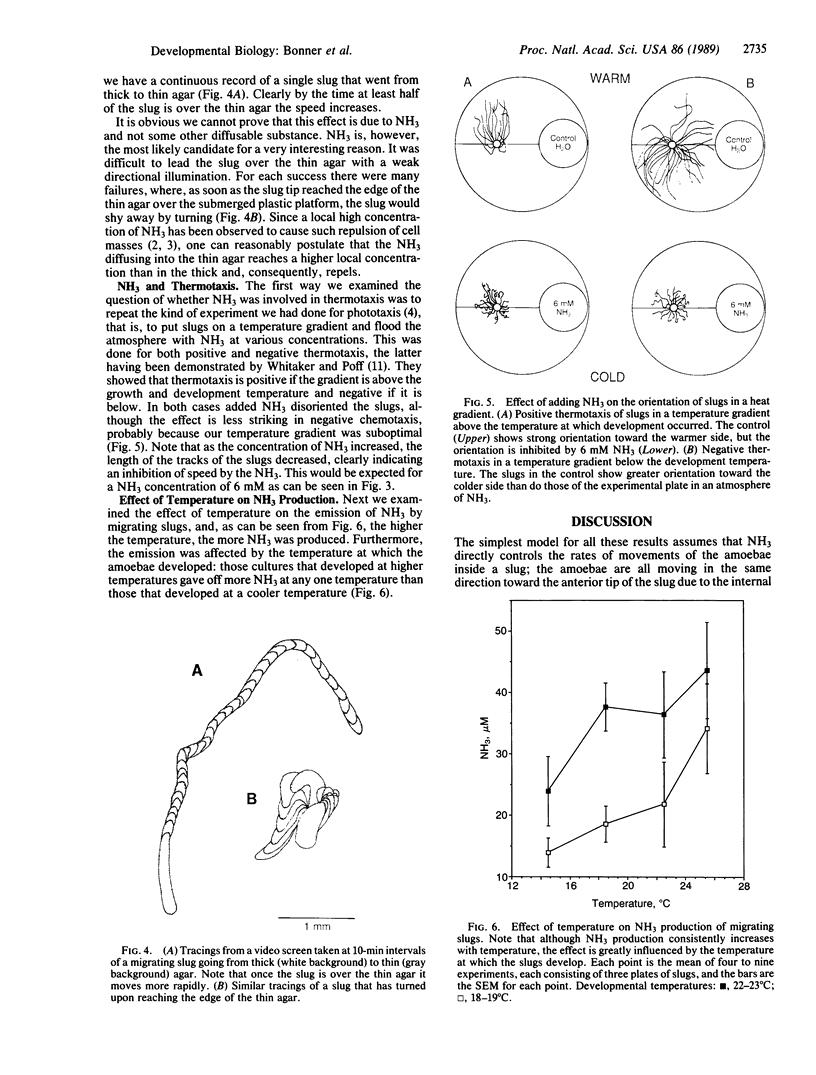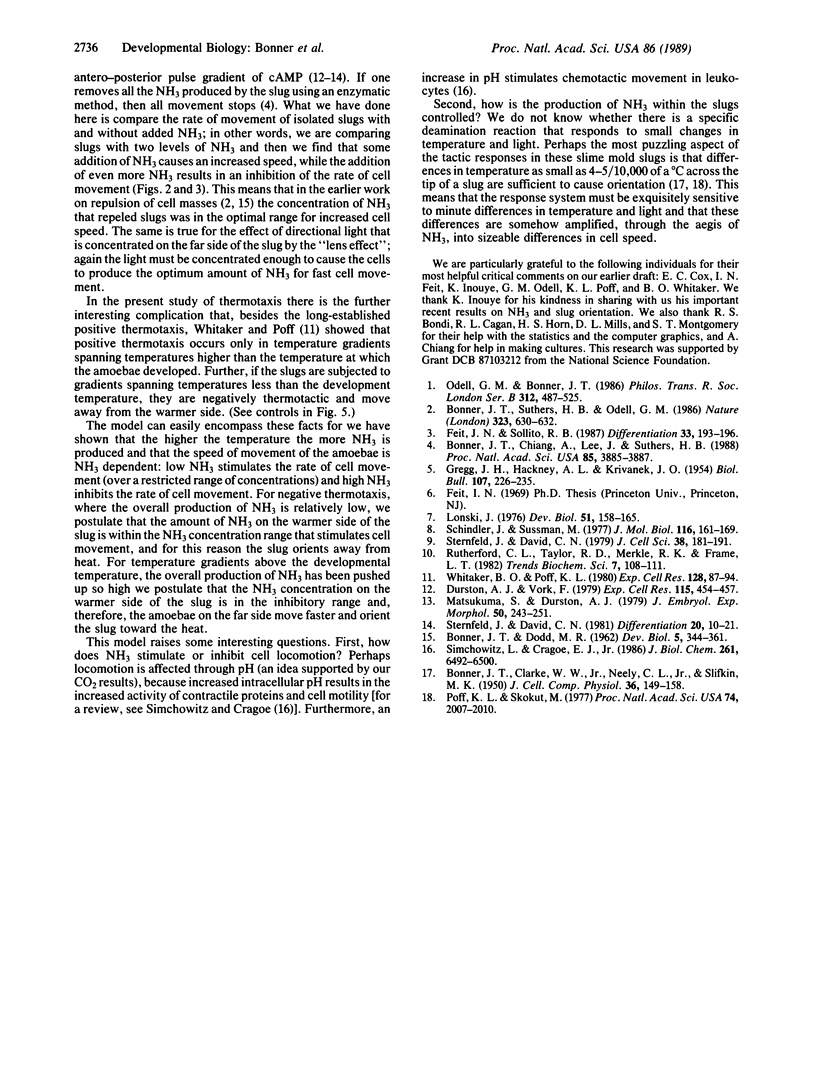Abstract
Evidence is presented to support the hypothesis that, in addition to its possible role in mediating chemo- and phototaxis, ammonia (NH3) is also the key substance responsible for directing thermotaxis of the migrating slugs of Dictyostelium discoideum. NH3 is produced by the cells of the slug and we show that high and low concentrations of NH3 decrease the speed of the amoebae while intermediate concentrations increase their speed. NH3 production by amoebae is affected by temperature: the greater the temperature, the more NH3 is produced. From these facts we speculate that both the positive and the negative thermotaxis found in slugs can be explained by temperature gradients stimulating regional differences in NH3 production, and depending upon the temperature, the amount of NH3 will either be in the range that stimulates or inhibits the rate of movement. If this explanation is correct, then minute localized differences in the production of NH3 and their differential effect on cell speed could account for all the directed movements of the cell masses of these slime molds.
Keywords: slime molds, taxes, kineses, pH
Full text
PDF



Images in this article
Selected References
These references are in PubMed. This may not be the complete list of references from this article.
- BONNER J. T., CLARKE W. W., Jr, NEELY C. L., Jr, SLIFKIN M. K. The orientation to light and the extremely sensitive orientation to temperature gradients in the slime mold Dictyostelium discoideum. J Cell Physiol. 1950 Oct;36(2):149–158. doi: 10.1002/jcp.1030360203. [DOI] [PubMed] [Google Scholar]
- BONNER J. T., DODD M. R. Evidence for gas-induced orientation in the cellular slime molds. Dev Biol. 1962 Oct;5:344–361. doi: 10.1016/0012-1606(62)90018-0. [DOI] [PubMed] [Google Scholar]
- Bonner J. T., Chiang A., Lee J., Suthers H. B. The possible role of ammonia in phototaxis of migrating slugs of Dictyostelium discoideum. Proc Natl Acad Sci U S A. 1988 Jun;85(11):3885–3887. doi: 10.1073/pnas.85.11.3885. [DOI] [PMC free article] [PubMed] [Google Scholar]
- Durston A. J., Vork F. The spatial pattern of DNA synthesis in Dictyostelium discoideum slugs. Exp Cell Res. 1978 Sep;115(2):454–457. doi: 10.1016/0014-4827(78)90308-7. [DOI] [PubMed] [Google Scholar]
- Lonski J. The effect of ammonia on fruiting body size and microcyst formation in the cellular slime molds. Dev Biol. 1976 Jul 1;51(1):158–165. doi: 10.1016/0012-1606(76)90131-7. [DOI] [PubMed] [Google Scholar]
- Matsukuma S., Durston A. J. Chemotactic cell sorting in Dictyostelium discoideum. J Embryol Exp Morphol. 1979 Apr;50:243–251. [PubMed] [Google Scholar]
- Poff K. L., Skokut M. Thermotaxis by pseudoplasmodia of Dictyostelium discoideum. Proc Natl Acad Sci U S A. 1977 May;74(5):2007–2010. doi: 10.1073/pnas.74.5.2007. [DOI] [PMC free article] [PubMed] [Google Scholar]
- Schindler J., Sussman M. Ammonia determines the choice of morphogenetic pathways in Dictyostelium discoideum. J Mol Biol. 1977 Oct 15;116(1):161–169. doi: 10.1016/0022-2836(77)90124-3. [DOI] [PubMed] [Google Scholar]
- Simchowitz L., Cragoe E. J., Jr Regulation of human neutrophil chemotaxis by intracellular pH. J Biol Chem. 1986 May 15;261(14):6492–6500. [PubMed] [Google Scholar]
- Sternfeld J., David C. N. Ammonia plus another factor are necessary for differentiation in submerged clumps of Dictyostelium. J Cell Sci. 1979 Aug;38:181–191. doi: 10.1242/jcs.38.1.181. [DOI] [PubMed] [Google Scholar]
- Whitaker B. D., Poff K. L. Thermal adaptation of thermosensing and negative thermotaxis in Dictyostelium. Exp Cell Res. 1980 Jul;128(1):87–93. doi: 10.1016/0014-4827(80)90390-0. [DOI] [PubMed] [Google Scholar]




